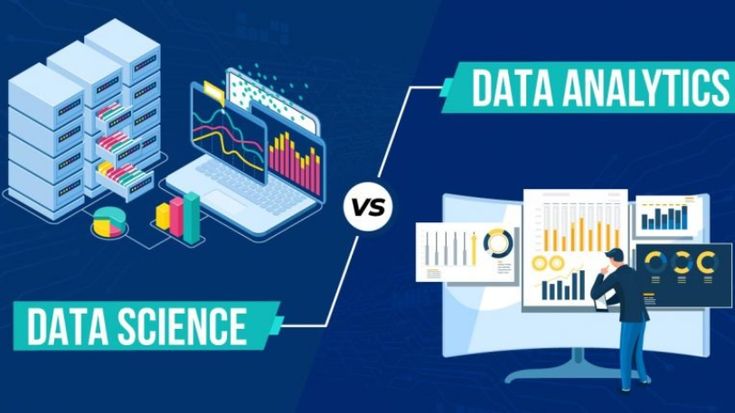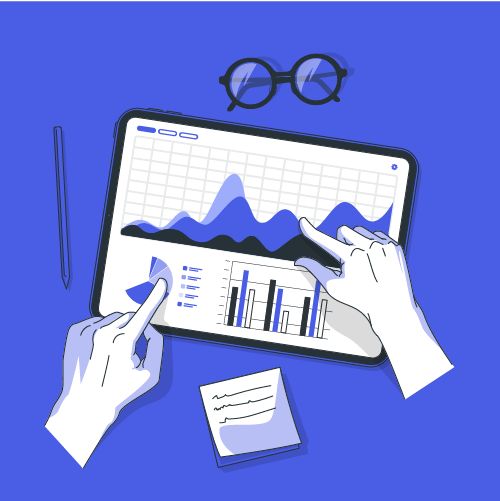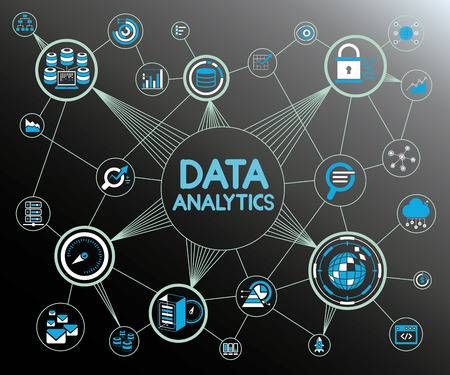If you’ve been researching data careers lately, you’ve probably noticed that the terms “data science” and “data analytics” get mixed up constantly. Job postings use them interchangeably, career guides blur the lines, and even experienced professionals sometimes struggle to articulate the differences. Let’s cut through the confusion and understand what separates these two fields.

Data Science vs Data Analytics: The Methodology Gap

Data analytics follows a more structured, defined process. You start with business questions, gather relevant data, perform analysis using established statistical methods, and present insights. The methodology is relatively straightforward and repeatable → there’s usually a clear path from question to answer.

Data science operates more like research and development. You might start with a hypothesis, but the process involves experimentation, iteration, and often pivoting when initial approaches don’t work. Data scientists spend significant time exploring data to discover patterns that weren’t obvious upfront, and the methodology evolves based on what the data reveals.
Data Science vs Data Analytics: The Technical Depth Spectrum
While both roles require technical skills, the depth and breadth differ significantly.
Data analytics typically requires:
- Proficiency in SQL for data querying and manipulation
- Statistical analysis using tools like R, Python, or specialized software
- Data visualization tools like Tableau, Power BI, or similar platforms
- Understanding of descriptive and basic inferential statistics
- Business intelligence tools and reporting platforms
Data science demands deeper technical expertise:
- Advanced programming in Python or R with extensive library knowledge
- Machine learning algorithms and deep learning frameworks
- Advanced mathematics, including linear algebra, calculus, and probability theory
- Big data technologies like Spark, Hadoop, or cloud ML platforms
- Model deployment, monitoring, and maintenance in production environments
Problem-Solving Orientation
Data analysts typically work on well-defined problems with clear success metrics. Business stakeholders come with specific questions: “Why did sales drop last quarter?” or “Which marketing channels are most effective?” The analyst’s job is to find the answer using available data and present it in an actionable format.
Data scientists often work on ambiguous problems where the solution approach isn’t clear. They might be asked to “improve customer retention” or “optimize our pricing strategy” without specific direction on methodology. The process involves defining the problem, exploring potential approaches, and building solutions from scratch.
Data Science vs Data Analytics: The Prediction vs Description Divide
Data analytics is primarily retrospective and descriptive. Analysts look at historical data to understand what happened, identify trends, and explain business performance. Even when making forecasts, they typically use established methods like time series analysis or simple extrapolation.
Data science is fundamentally predictive and prescriptive. Data scientists build models that forecast future outcomes, recommend actions, or automate decisions. They create systems that learn from new data and improve over time, often replacing human decision-making processes.
Data Science vs Data Analytics: Industry Applications and Context
Data analytics is found across virtually every industry and business function. Marketing analysts optimize campaigns, financial analysts assess risk, operations analysts improve efficiency, and HR analysts understand workforce trends. The applications are broad but typically focused on specific business domains.
Data science tends to concentrate on tech companies, financial services, healthcare, and other industries where predictive modeling creates significant competitive advantages. Data scientists might work on recommendation systems, fraud detection, autonomous vehicles, or drug discovery → problems that require sophisticated modeling techniques.
Data Science vs Data Analytics: Educational Pathways and Prerequisites
Data analytics has multiple entry points. Many successful analysts start with business or liberal arts backgrounds and add technical skills through boot camps, online courses, or on-the-job training. The barrier to entry is relatively accessible, and career changers can become productive fairly quickly.
Data science typically requires more intensive preparation. Most data scientists have advanced degrees in quantitative fields like statistics, computer science, mathematics, or engineering. The mathematical foundation required for understanding machine learning algorithms means a steeper learning curve and longer preparation time.
Data Science vs Data Analytics: Team Structure and Collaboration
Data analysts usually work closely with business teams, serving as translators between technical data and business insights. They attend marketing meetings, work with finance teams, and present to executives. Strong communication skills and business acumen are crucial for success.
Data scientists often work in more technical environments, collaborating with software engineers, product managers, and other data scientists. While business understanding is important, they typically don’t interface with business stakeholders as directly as analysts do.
Data Science vs Data Analytics: Project Timelines and Expectations
Data analytics projects tend to have shorter timelines and more immediate results. A typical analysis might take days to weeks, and stakeholders expect regular updates and quick turnaround on questions. The value is often realized immediately when insights inform decisions.
Data science projects have longer development cycles and more uncertain outcomes. Building effective machine learning models can take months, and there’s always a risk that a project won’t yield usable results. The value often compounds over time as models improve and scale.
Tools and Technology Stack
| Category | Data Analytics | Data Science |
| Programming | SQL, basic Python/R | Advanced Python/R, Scala |
| Visualization | Tableau, Power BI, Excel | Matplotlib, Plotly, custom tools |
| Statistics | Descriptive stats, basic tests | Advanced ML, deep learning |
| Infrastructure | Standard databases | Cloud platforms, distributed computing |
| Deployment | Reports and dashboards | Model APIs, production systems |
Data Science vs Data Analytics: Salary and Career Progression
Data analytics salaries are generally lower but more predictable. Entry-level analysts might start around $50-70K, with senior analysts reaching $90-120K. Career progression often leads to management roles, business intelligence leadership, or specialized domain expertise.
Data science salaries tend to be higher but more variable based on skills and industry. Entry-level data scientists might start at $80-100K, with experienced professionals reaching $150K+ at major tech companies. Career paths often lead to machine learning engineering, research roles, or technical leadership positions.
Data Science vs Data Analytics: The Hybrid Reality in Modern Organizations
Many modern roles blend elements of both fields. “Analytics engineers” build data pipelines that support both descriptive analysis and machine learning. “Applied data scientists” focus on practical business applications rather than pure research. “Business analysts with ML skills “use predictive modeling for specific business problems.
The distinction becomes less important than understanding what specific skills your role requires and what problems you’re solving. Some positions need deep statistical modeling expertise, while others need strong business communication and domain knowledge.
Data Science vs Data Analytics: Making Your Career Choice
Consider your interests and natural strengths when choosing between these paths:
Choose data analytics if you:
- Enjoy working directly with business stakeholders
- Like solving concrete, well-defined problems
- Prefer seeing an immediate impact from your work
- Want a more accessible entry point into data careers
- Are interested in business strategy and operations
Choose data science if you:
- Enjoy complex technical challenges and experimentation
- Are comfortable with ambiguous, open-ended problems
- Have strong mathematical and programming backgrounds
- Want to build systems that automate decision-making
- Are interested in cutting-edge technology and research
Data Science vs Data Analytics: Skills Development Strategy
Regardless of which path you choose, start with strong foundations in statistics, SQL, and at least one programming language. Both roles require data cleaning, visualization, and communication skills.
If you’re leaning toward analytics, focus on business intelligence tools, dashboard creation, and domain expertise in industries that interest you. Develop your storytelling and presentation skills since you’ll be communicating findings regularly.
If you’re interested in data science, invest heavily in machine learning, advanced programming, and mathematical foundations. Build a portfolio of projects that demonstrate your ability to work with complex data and build predictive models.
Both career paths offer excellent opportunities in today’s data-driven economy. The key is understanding which type of work energizes you and aligning your skill development accordingly. Whether you end up building dashboards that inform quarterly business reviews or machine learning models that power product recommendations, you’ll be playing a crucial role in helping organizations make better decisions with data.